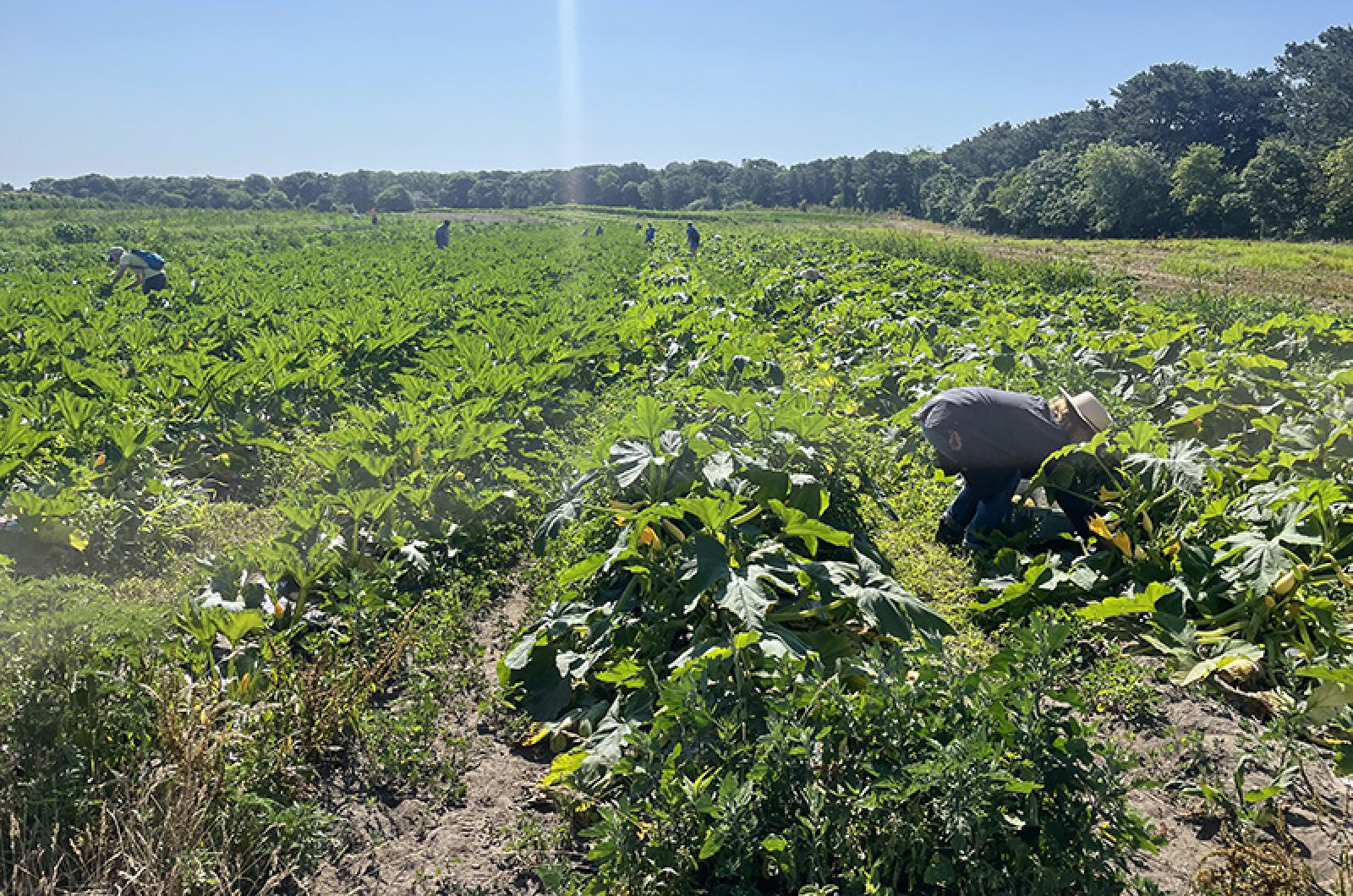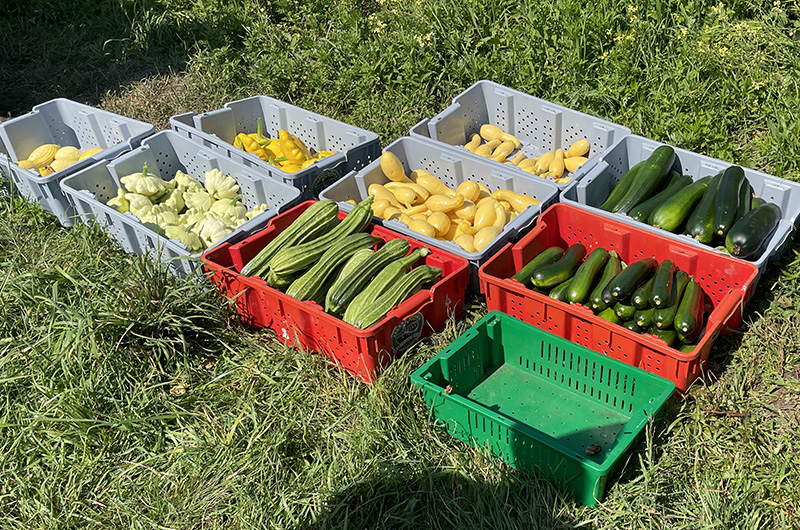What I gleaned from the glean.
My column this week must begin with a short notice to the lady who lent me a hat at the glean last Wednesday, whose name I neglected to record. I left your hat with Astrid. Thank you for the sun protection.
The Astrid I refer to is Astrid Tilton, gleaning manager of the Island Grown Initiative. Under her direction, a group of volunteers young and (more often) old gather to salvage Island crops otherwise wasted. Last year they harvested over 48,000 pounds of food for community programs. The gist of the program was explained, succinctly, by Island historian Tom Dresser (also present Wednesday) in a Gazette editorial: “Gleaning, you ask? Isn’t that some 14th-century program where serfs pick through the fields of the manors to find a bit of sustenance, a leftover turnip or forgotten grains? Right! And we have gleaners on the Vineyard in 2011? Right again! You’re starting to follow the thread of this tale.”
The “thread of this tale” in fact stretches back to biblical times. Leviticus 19:9-10 reads: “And when ye reap the harvest of your land, thou shalt not wholly reap the corners of thy field…thou shalt leave them for the poor and stranger.”
But whether we count its age in centuries or millennia, the fact remains that this ancient practice flourishes on the Island. There were about 15 of us at the last glean, gathered at the rolling Rocky Top field across from the Morning Glory farmstand. After a private conference between Astrid and Dan Athearn, who pulled in on his little blue tractor, our target was determined: summer squash.
I mentioned the vitality of the midsummer curcubit last week, but it bears repeating. The squash will always outpace the feeble, mortal farmer. A zucchini which yesterday was tender and harvested, if left to its own devices will tomorrow be enormous and woody. I have seen zucchini longer than my arm, which Gazette intern Noah Glasgow estimated at two feet/four inches, and substantially thicker.
To not pick a ripe zucchini is to squander the crop’s photosynthetic output, allowing the plant to pump energy into unmarketable and overripe fruit. But to harvest for an already squash-burdened farmstand, neglecting other pressing chores, is a sub-optimal use of labor. There lies the fundamental tension of squash season, which only the gleaners can resolve. They sweep the field of unwanted squash, readying it for future harvest, while contributing tons of produce to Island charities and bringing home veggies for dinner. I count at least three wins, maybe more.
But no victory is won without toil, and the squash fields are a treacherous battlefield. The prickly stems irritated an already uncomfortable case of poison ivy, and the harvest boxes only got heavier as the field stretched on. I began to remember why, as the season dragged on, I always came to resent squash-picking duty.
Thankfully, a Martha’s Vineyard gleaner’s duties are short, and the job didn’t outstay its welcome that morning. As the harvest wound down, I placed my last box among the pattypans, pantheons and zucchini of all shades. I noticed a little inchworm crawling up my shirt to greet me. It was a good day to be a gleaner.








Comments
Comment policy »